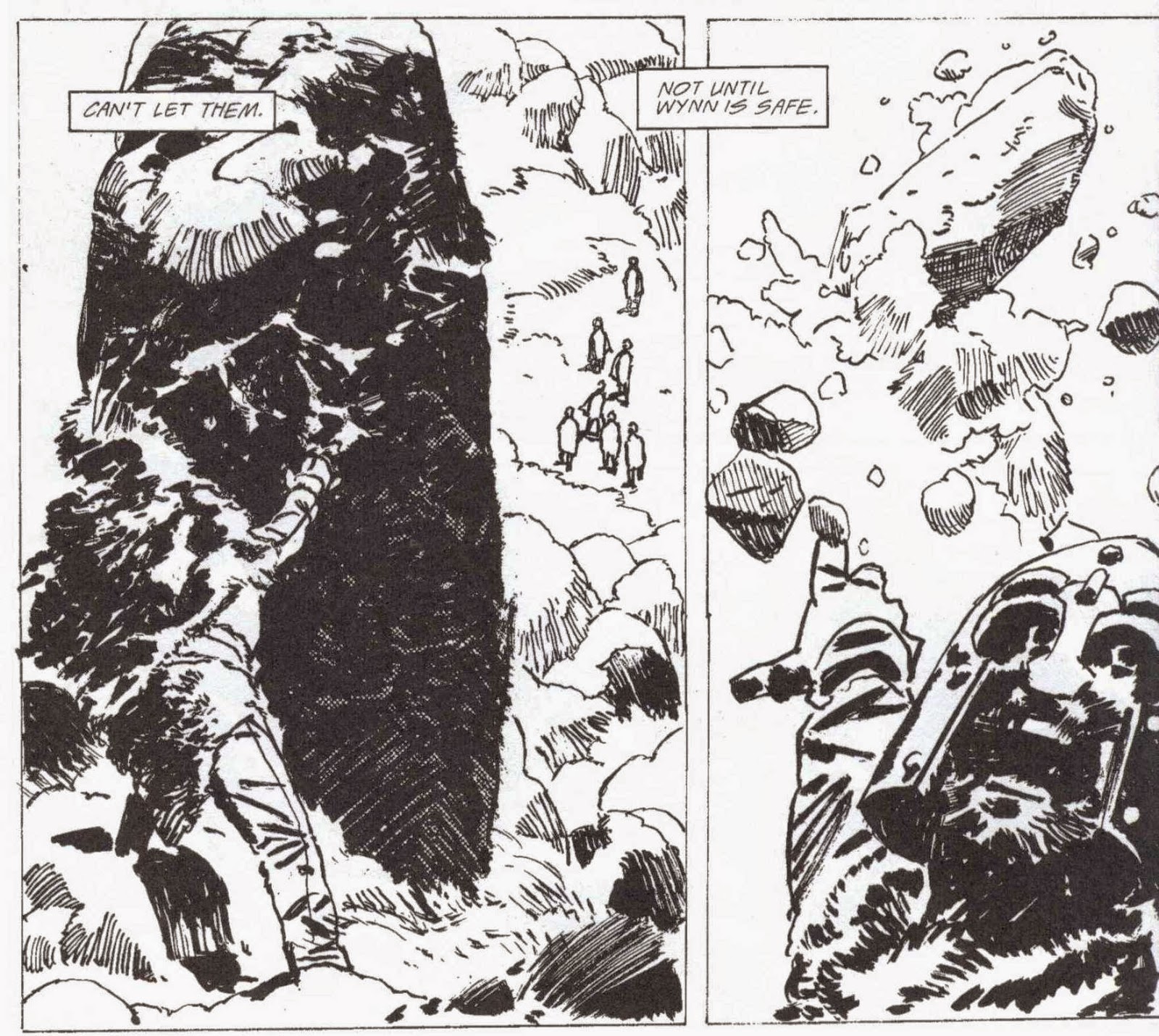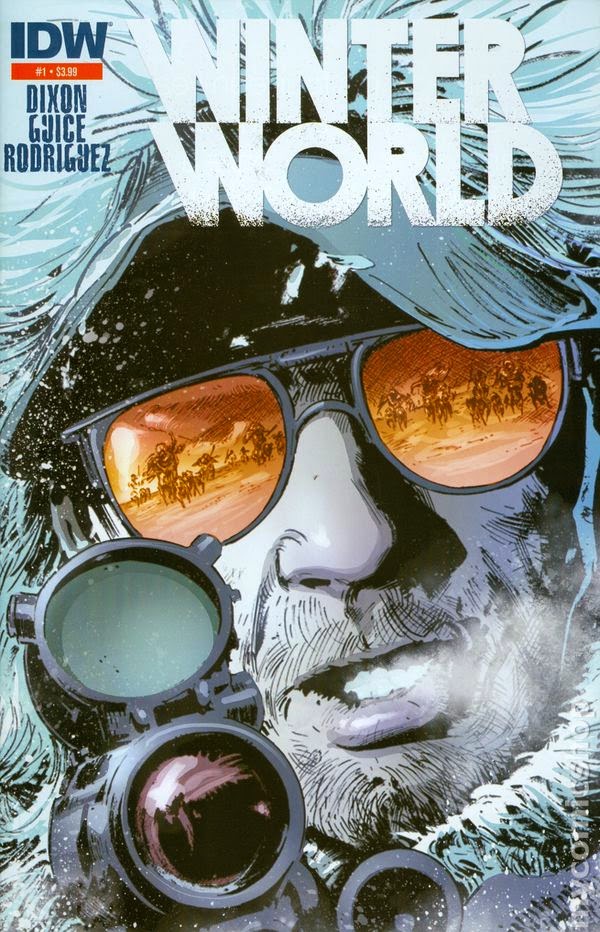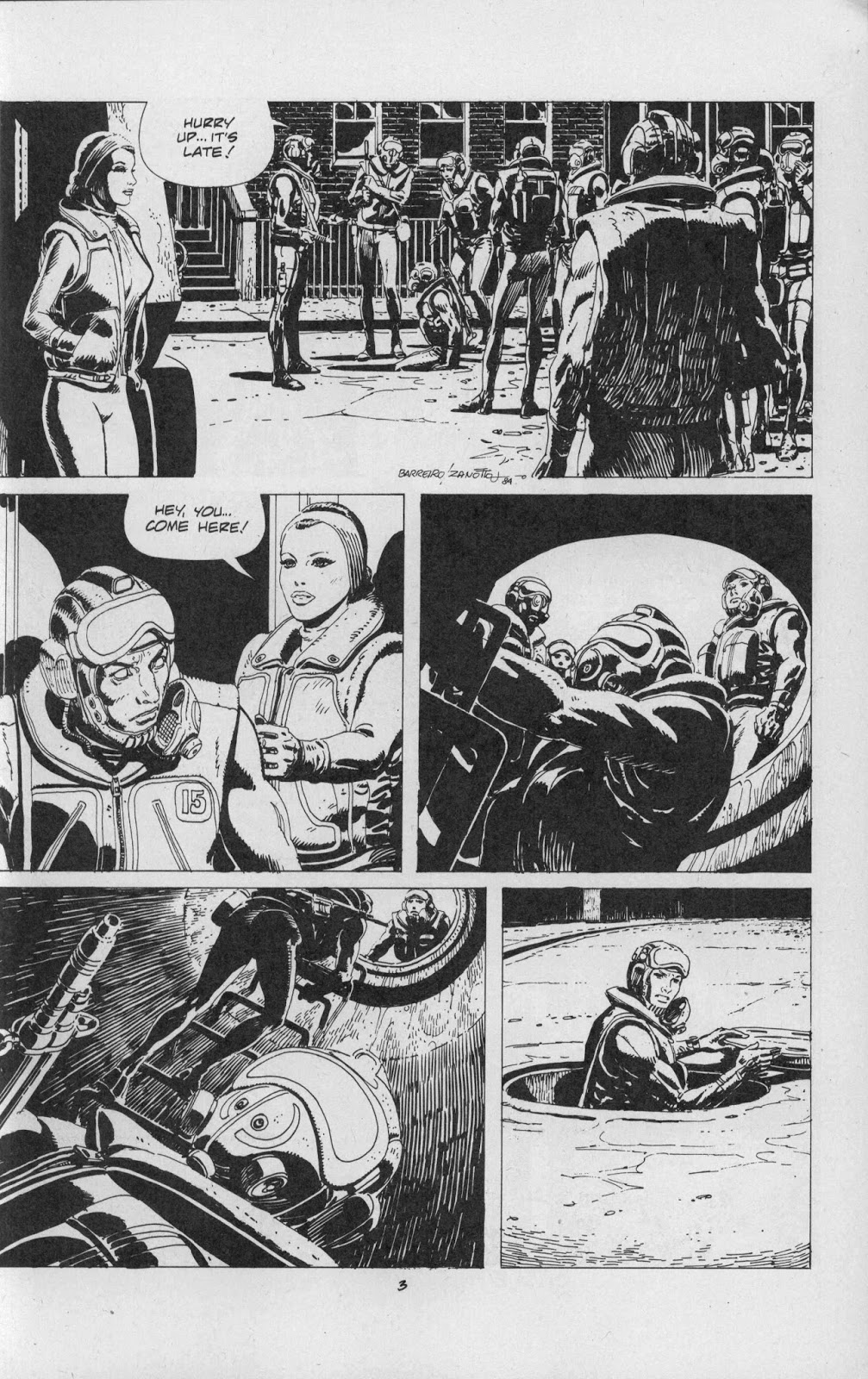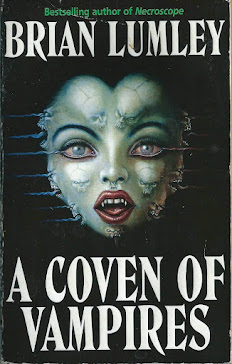'Winter World' was a three-issue, black and white comic published by the indie company Eclipse Comics from September 1987 - March 1988. [Dixon had plans with Marvel comics to publish a three issue sequel, 'WinterSea', but the project never came to fruition.]
This 2014 IDW hardbound volume compiles all the issues of 'Winter World' and 'Wintersea', along with some extra material in the form of cover artwork and pinups by artist Jorge Zaffino (1960 - 2002).
'Winter World' is set in the near-future; the Ice Age has returned and most of the planet is shrouded in snow and ice.
Scully, the lead character, is a trader; sort of a New Ice Age version of Han Solo. Scully wanders the wastes in his oversize snowcat tracked vehicle. His companion is an oversize, highly intelligent badger named Rahrah. Rahrah is an unusual sidekick, and a cool character.
Life in this environment is akin to that of the 'Mad Max' movies, where self-interest is the key to survival, and double-crosses, atrocities, and ongoing acts of inhumanity are par for the course.
As 'World' opens, Scully saves a wisecracking redheaded girl named Wynn from an unrewarding life at the hands of a particularly smelly and treacherous tribe of ice-dwellers.
However, Scully suffers from bad luck, and soon he and Wynn are in the hands of a group of slavers who have no compunctions about working their captives to death. It's up to Scully and Rahrah to save the day......with lots of explosions, and severed fingers, along the way.
'WinterSea' finds our two heroes heading south, in search of a mythical land where volcanic activity renders the land free of snow and ice, and where strange things called plants are able to thrive.
Of course, double-dealers and fate conspire against the hapless Scully, and he winds up a member of the living larder (!) of a tribe of ice pirates. Only heroic action from a reluctant Scully can save Wynn and the mythical land of Earthfire.
Dixon's script is well-done, mingling sarcastic humor with plenty of action, odious villains, a believable post-apocalyptic world, and moral ambiguity - Scully isn't the traditional hero type, but a hustler who is more than willing to put his own agenda first and foremost.
The artwork in 'Winter World' is, in my opinion, 'serviceable'; it was Zaffino's first major art assignment for a US publication. In his Introduction to the third issue of Winter World, reprinted here in the compilation, Dixon reminisces about seeing some of the sketches from the Argentinian artist Jorge Zaffino, and concluding that he absolutely had to work with such a talented artist.
While Zaffino' indeed shows some skill in his pen-and-ink draftsmanship, there are too many panels where over-inking and poor rendering make the content difficult to make out. And more than a few panels of the 'WinterSea' comics show such a sketchy, half-finished character, that it's clear that the comic book was not ready for release at the time Marvel made the decision not to produce it.
The verdict ? 'Winter World' and 'WinterSea' are entertaining examples of 80s sci-fi comics. Along with getting the hardback compilation, I recommend looking for the brand-new 'Winter World' series, by Dixon and artist Jackson Guice, being published as a full - color comic book by IDW during the Summer of 2014.































































































